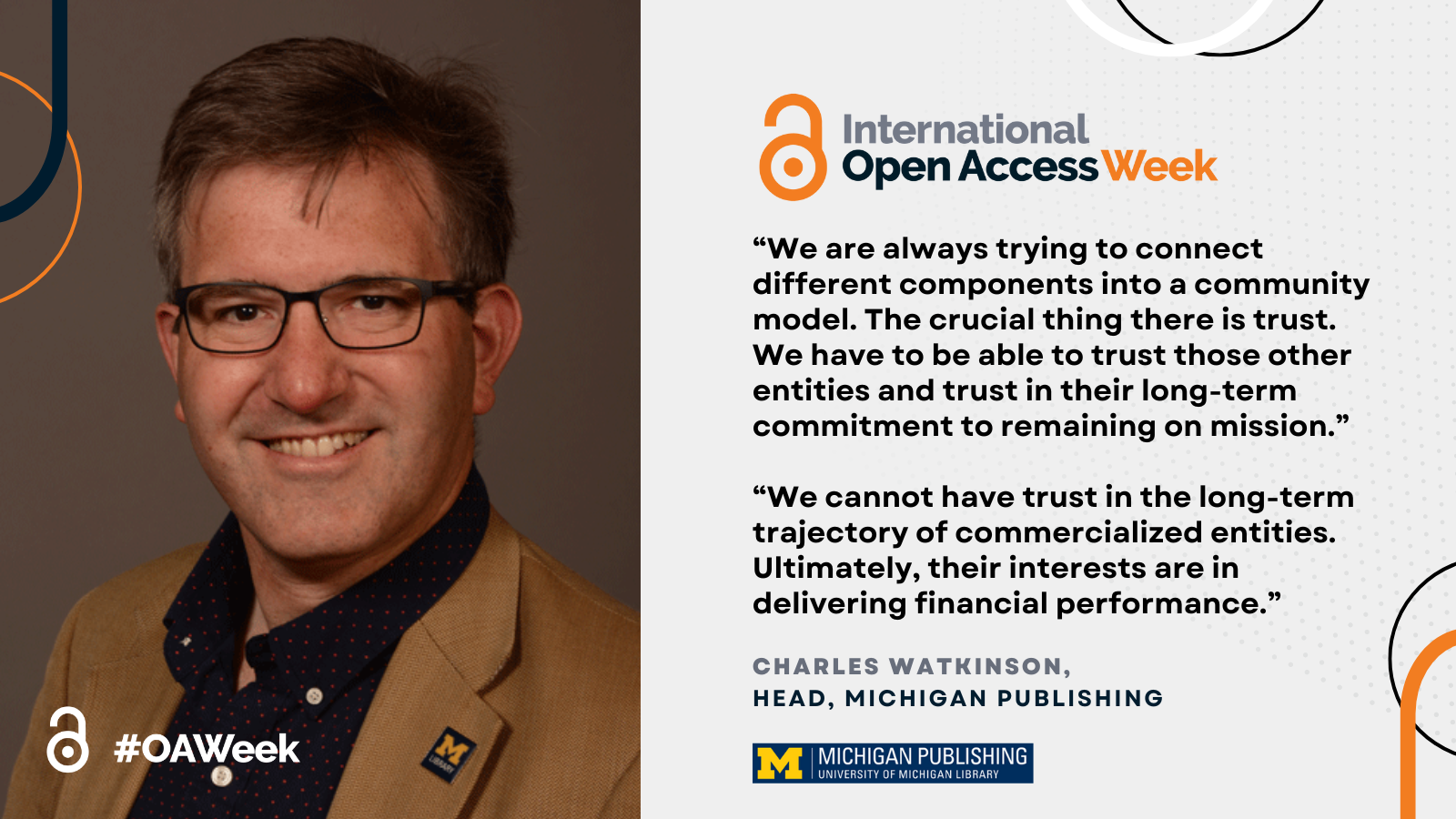Michigan Publishing
Background: In 2009, the University of Michigan combined resources from the library’s Scholarly Publishing Office, the Deep Blue Repository (later including Research Data Services), and the University of Michigan Press to establish Michigan Publishing. The new entity created publishing capacity that could meet the needs of scholars across a spectrum of publishing needs.
Recognizing that these needs keep evolving, Michigan Publishing now offers both open and restricted access sustainability options (with a bias toward openness) and supports multiple publication formats including research data, technical reports, books, and journal articles. Clients include not only faculty, staff, and students at the University of Michigan, but also an increasing array of philosophically-aligned publishers outside the institution. These external partners can leverage the economies of scale shared infrastructure provides while staying true to a vision of an academy-owned core for scholarly publishing.
Mission: Michigan Publishing supports the broadest possible access to scholarship by promoting: 1) engagement with authors and creators through investments in quality, openness and innovation; 2) equity, justice, and inclusion; and 3) improvement in the structure and clarity of its processes. The focus is on providing a robust infrastructure so that scholarly work is always discoverable, accessible, and preservable.
Community over Commercialization:
“The community does involve commercial entities, but the heart of the community has to be kept within the university. It’s about keeping the core within the academy.”
“What we as the academic community define as the core [of publishing] has tended to be about just content and editorial processes. In a digital environment, I believe that the format and platform, in other words the medium as well as the message, now constitute the core. Authors and creators are continually developing new kinds of outputs that require that we keep capacity within the academy to serve their developing needs.”
“We're all infrastructure. We're all interconnected. A very important part of what the Michigan model involves is ensuring that benefits accrue to all. When we create open infrastructure, we're actually putting together a lot of different components. We try to make sure that we redistribute money and/or effort to all of our constituent entities.”
“We are always trying to connect different components into a community model. The crucial thing there is trust. We have to be able to trust those other entities and trust in their long-term commitment to remaining on mission.”
“We cannot have trust in the long-term trajectory of commercialized entities. Ultimately, their interests are in delivering financial performance—and that generally looks a lot like exit strategies, being bought by a larger entity. That is the concern when a commercial entity articulates that they are a ‘community player.’ When they get bought out, the driving value is to deliver money to owners or shareholders.”
“The University of Michigan has been here since 1817. Since that time, the library has always committed to stewardship of its resources and content. We're in it for the long, long haul. And that's really important when you think about preservation, site stability, and commitments to access.”
-Charles Watkinson, Head, Michigan Publishing

